#african grey enrichment
Explore tagged Tumblr posts
Text
#tiktokparrot#african grey#african grey lifespan#african grey parrot care#african grey behavior#buying an african grey parrot#africangrey#african grey parrot lifespan in captivity#african grey parrot#cute birds#African Grey beak health#African Grey calcium absorption#African Grey calcium deficiency symptoms#african grey care#African Grey diet#african grey enrichment#african grey foraging toys#African Grey happiness#african grey health issues#african grey Intelligence#African grey lifespan#African Grey nervous system health#african grey Nutrition#African Grey Parrot#african grey parrot website#African Grey pellets#African Grey picky eater#African Grey sunlight exposure#african grey website#avian health
0 notes
Text
I miss my family's birds so bad now, ouchies for my soul.
Words cannot express how much I love this bird.
#african grey#parrot#bird#enrichment#so lovely#you take so good care of that darling#such a smart and well practiced wee beast
49K notes
·
View notes
Text
youtube
The Remarkable African Grey Parrot
Discover the incredible world of the African Grey Parrot, renowned for its intelligence and social nature!
Check out my other videos here: Animal Kingdom Animal Facts Animal Education
#Helpful Tips#Wild Wow Facts#African Grey Parrot#Parrot Intelligence#Talking Parrot#Parrot Training#African Grey Care#Exotic Birds#Parrot Speech#Bird Behavior#Pet Birds#Bird Training#African Grey Facts#Parrot Nutrition#Bird Enrichment#Grey Parrot Lifespan#Parrot Tricks#Bird Communication#Parrot Breeding#Parrot Vocalization#Bird Lovers#African Grey Talking#Smart Birds#Parrot Behavior#Parrot Bonding#Bird Health#African Grey Life#animal behavior#animal kingdom#animal science
0 notes
Note
(Video does not contain gore or upsetting image, it's a bird doing tricks)
https://youtube.com/shorts/g-KmjExgPRA?si=qxYNVZFziV5hHldr
I know it's not an owl, but is that bird ethical to keep? (If you know). Thanks either way!
African grey parrots are high on the list of most difficult parrots to ethically keep because they are incredibly intelligent in a way that requires a lot of mental stimulation. You can’t really justifiably leave them alone in a cage for long parts of the day for the same reason you can’t leave a toddler in their room alone all day.
The enrichment activities in the video are good exercises, but to keep the bird properly enriched you need to either take it everywhere you go or just stay at home all day entertaining it.
They can work fine in an aviary at a zoo where they can fit more enrichment and the birds can people watch and have other birds to interact with (though the greys I’ve known have preferred to keep to themselves or with one person honestly) to pass time, but in most households it is going to be impossible for the bird to be properly occupied.
28 notes
·
View notes
Note

Rating: Cute!
This Napoleon is doing some math! That’s a great enrichment activity, a lot of people don’t know this, but Napoleons love math, and can even count higher than four! That’s more than a parakeet can count, and parakeets are probably related to African Grey Parrots who are known for being smart!
Always remember that your Napoleon is better at math than a probable cousin of an African Grey Parrot!
I’m just worried about your Napoleon’s pelt? It looks like he’s molting on the top of his head there. A lot of creatures in his ecosystem lose their entire heads, is he trying to fit in by losing some hair? Maybe get your Napoleon some Rogaine.
15 notes
·
View notes
Text
A small tip of perspective for those that struggle to navigate their own needs but are animal lovers / pet parents, try to approach yourself and your needs (and for systems, parts and system needs) as if you were trying to understand a specific needs profile of a breed / version of the pet aren't the most aware of and don't have the ability to look up. I don't know how well this applies to non-dog/bird species, but largely in birds and dogs, there is a large variety of needs depending on the species / breed you get and even within species and breeds. What one needs is going to be drastically different from the other
What sort of enrichment is necessary to make this animal happy and able to live to the most of their natural behavioral capabilities? What sort of social exposure and activity does this animal need to meet their needs and make sure they have an enriched life? What have they been eating? Has it been one same meal over and over again beyond the point of enjoying it still? When was the last time things were changed up? When was the last time they were bathed or given the opportunity to see something new?
Largely our system is a bird, and like any bird, you really can't keep them in a cage all day so we have system rules that we should try to leave the house every day for at least an hour and preferably go somewhere that has something to look at that we haven't done in a while. We call this the "Fly the Coop" time and its just a general welfare rule. Treat the bird in our brain like the bird it is and give it it's "outside time" because not giving a bird that would be very bad for them.
We also are a parrot to be specific so it is very important to give us something to work on, a puzzle to figure out, and active mental stimuli and enrichment. We have a very high curious and drive to learn and figure things out, so like any particularly curious parrot, its important to lay out a number of activities, problems, and puzzles for us to figure out and build on - as a result it is important for us to always have a list of skills and problem solving and creation related things availible for us to engage with.
We are also very social but we aren't so much the active cuddler (save for specific parts) and active affectionate type, so much as we are more around the ways of an African Grey or Cockatiel that needs passive company and benefits from a mutually engaged environment; so it is important to have people (or birds for our case as it fills the need) around us doing their own thing and even better if they are also engaged as it lets us relax in an engaged state. Mutual engagement is one of the solid bonding activities. Additionally, we fill our social needs often in the form of social bathing, social eating, and general social cleaning / preening, so when possible, its good to put ourselves in environments where others are doing similar and/or bring our close people and our birds into those activities with us.
Routine is highly important to us as well which again is a good parallel to parrots so we keep that in mind.
With the general frame work, we can really easily apply a mental check list / needs list by largely applying a "welfare and needs" marker for a "non-existant parrot" and apply that to ourselves so rather than trying to figure out what "We Need", we can just make sure we have made sure the parrot need profile in our head has been met.
Largely following the general caresheet for the specific type of parrot that we are has honestly led to a lot better self care and day to day management of our mental, psychological, and physical health so its a perspective thing I do recommend.
11 notes
·
View notes
Text
PARROT OVERVIEW
PARROT FOR SALE
Parrots are a diverse group of birds known for their intelligence, vibrant plumage, and ability to mimic sounds and human speech. They belong to the order Psittaciformes, which includes more than 393 species.
Here are some general characteristics and information about parrots:
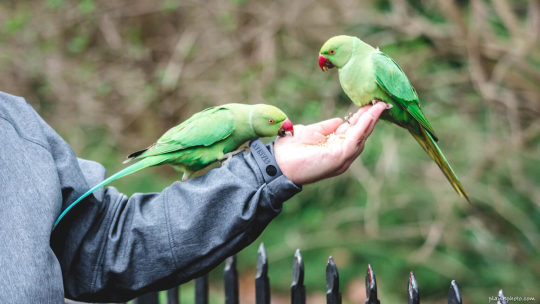
1. Size and Appearance: Parrots come in various sizes, ranging from small species like the Budgerigar (parakeet) to large ones like the Hyacinth Macaw. They have strong, curved beaks, zygodactyl feet (two toes facing forward and two toes facing backward), and a short, hooked upper beak. Their plumage displays a wide array of colors, including vibrant greens, blues, reds, yellows, and more.
2. Intelligence and Mimicry: Parrots are renowned for their high level of intelligence. They have complex problem-solving abilities, keen observational skills, and the capacity to learn and mimic sounds, including human speech. Some species, such as the African Grey Parrot, are particularly known for their exceptional language and cognitive abilities.
3. Natural Habitat: Parrots are found in various regions around the world, primarily in tropical and subtropical areas. They inhabit diverse habitats, including rainforests, savannas, woodlands, and deserts. Parrots are native to regions such as Central and South America, Australia, Africa, and Asia.
4. Diet: Parrots have a varied diet consisting of fruits, seeds, nuts, berries, flowers, and in some cases, nectar and pollen. Some parrot species also supplement their diet with insects, larvae, or small vertebrates. In captivity, it’s important to offer a balanced diet that includes high-quality pellets, fresh fruits, vegetables, and occasional treats.
5. Lifespan: The lifespan of parrots varies greatly depending on the species. Smaller parrots, like Budgerigars, may live around 5 to 10 years, while larger species, such as Macaws and Cockatoos, can live for several decades. Some parrots, like the African Grey Parrot, have been known to live beyond 50 years with proper care.
6. Social Behavior: Parrots are highly social creatures that thrive on social interaction and companionship. In the wild, they often form flocks and engage in complex social behaviors. In captivity, it is important to provide parrots with ample socialization, mental stimulation, and opportunities for social interaction with their human caretakers.
7. Care and Ownership: Owning a parrot requires commitment and dedication. They need a spacious and enriched environment, including a properly sized cage, perches of various sizes and textures, and toys to keep them mentally and physically stimulated. Regular veterinary check-ups, a balanced diet, and mental engagement are necessary for their well-being.
It’s important to note that parrots are long-lived, highly intelligent, and social animals that require significant time, attention, and care. Before considering a parrot as a pet, it’s crucial to thoroughly research the specific needs of the species you are interested in and ensure that you can provide them with the appropriate environment and care throughout their lifespan.
There are several species of parrots that are commonly kept as pets due to their appealing traits, including their intelligence, ability to mimic sounds, and colorful plumage.
Here are some examples of popular parrot species kept as pets:
1. Budgerigar (Parakeet): Budgerigars, often referred to as parakeets, are small parrots native to Australia. They are known for their playful and social nature, ease of care, and ability to learn simple tricks. Budgerigars are available in a variety of colors and can be great companions for first-time bird owners.
2. Cockatiel: Cockatiels are small to medium-sized parrots native to Australia. They are known for their charming crests, friendly personalities, and ability to whistle and mimic sounds. Cockatiels are relatively low-maintenance birds and can bond closely with their human caretakers.
3. African Grey Parrot: African Grey Parrots are highly intelligent parrots native to the rainforests of West and Central Africa. They are known for their exceptional talking and mimicking abilities, as well as their complex problem-solving skills. African Grey Parrots require a significant amount of mental stimulation and social interaction.
4. Amazon Parrot: Amazon Parrots are medium-sized parrots native to Central and South America. They come in a variety of colors, and some species are known for their talking abilities. Amazon Parrots are social birds that require mental stimulation, social interaction, and consistent training.
5. Conures: Conures are a group of small to medium-sized parrots native to the Americas. They come in various colors and have playful and outgoing personalities. Popular conure species kept as pets include the Green-cheeked Conure, Sun Conure, and Nanday Conure. Conures are active birds that require regular social interaction and mental stimulation.
6. Macaws: Macaws are large parrots known for their vibrant plumage and impressive size. Popular pet macaw species include the Blue and Gold Macaw, Green-winged Macaw, and Scarlet Macaw. Macaws are highly intelligent and require ample space, socialization, and mental stimulation.
7. Cockatoos: Cockatoos are large parrots known for their crest and affectionate nature. Popular pet cockatoo species include the Umbrella Cockatoo, Moluccan Cockatoo, and Goffin’s Cockatoo. Cockatoos can be demanding pets in terms of attention and care, and they need a lot of mental stimulation and social interaction.
It’s important to note that each parrot species has specific care requirements, and potential owners should thoroughly research the needs, behavior, and lifespan of the species they are interested in before making a decision. Additionally, adopting a parrot from a reputable rescue organization or breeder is recommended to ensure the bird’s well-being and to support responsible parrot ownership.
2 notes
·
View notes
Text
Uganda: Africa’s Ultimate Safari Destination
Uganda, often known as the "Pearl of Africa," certainly justifies its title. With stunning views of the River Nile and Lake Victoria, diverse cultures, and numerous national parks teeming with primates, wildlife, and birds, Uganda stands out as the ultimate destination for safari holidays. Its landscapes are incredibly varied and picturesque, ranging from mountains to lakes and forests. Safari holidays in Uganda offer a unique and enriching travel experience with diverse attractions that cater to various interests.
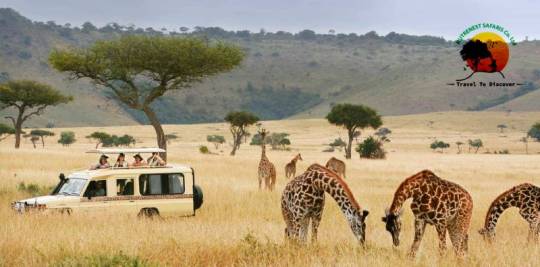
Why Visit Uganda?
Rich Wildlife Uganda is home to a wide range of wildlife and boasts several national parks that provide excellent opportunities for safaris and wildlife viewing. If you're interested in wildlife safaris in Uganda, you might wonder what kind of animals you can see. Uganda is a paradise for wildlife lovers, boasting a diverse range of animal species. From bush elephants to African lions and big cats, Uganda has almost every kind of animal you can imagine.
Among the mammals you can spot are tree-climbing lions in Ishasha, buffalos, elephants, crocodiles, zebras, leopards, elegant antelopes, and hippopotamuses near the picturesque lakes within the parks. Some endangered animals include the Mountain gorilla, Chimpanzee, crested crane, African wild dog, and Pangolin. Uganda is home to around 400 gorillas and various primates like the red-tailed monkey, black and white colobus monkeys, vervets, and olive baboons.
National Parks Uganda's national parks, such as Bwindi Impenetrable National Park, Murchison Falls National Park, Kibale National Park, Queen Elizabeth National Park, Lake Mburo National Park, and the remote Kidepo National Park in the Karamoja region, are brimming with wildlife and stunning landscapes.

Bird Watching Uganda is a bird watcher's haven, home to thousands of bird species, including the Grey Heron, Black-headed Heron, Goliath Heron, Purple Heron, Great Egret, Black Heron, Intermediate Egret, Grebes, Great Bittern, Dwarf Bittern, White-backed Night-heron, Black-crowned Night-heron, Striated Heron, Cattle Egret, and Madagascar Pond-Heron.
Gorilla Trekking One of Uganda's most famous attractions is the chance to see mountain gorillas in their natural habitat. Gorilla trekking is a popular activity in Uganda, with permits priced at $600. While it may be expensive, spending an hour with these endangered species is an unforgettable experience. By purchasing a permit, you contribute to the conservation of these primates and their rainforest homes.
Adventure Activities For adventure seekers, Uganda offers numerous thrilling activities. The Nile River near Jinja is renowned for some of the best white-water rafting in the world. The country's varied terrain provides excellent opportunities for hiking and trekking, including the challenging hike to the top of Mount Elgon.

Taste Local Fruits Uganda is well-known for its banana cultivation, which keeps the country lush and green. Visitors can enjoy rare fruits such as papaya, sweet jackfruits, pineapples, and more. Experience the natural flavors of Uganda with cuisine crafted from local seasonal produce.
Supporting the Local Community Visiting Uganda supports the local community, as tourism revenue helps build hospitals and schools. For example, Bwindi Hospital specializes in HIV treatments and is one of the projects supported by tourism.
Best Lodges to Stay Uganda offers a range of accommodations, from budget to luxury, built with African materials and showcasing the rich African culture. These lodges, campsites, and hotels provide comfortable rooms, free Wi-Fi, hot water, bars, swimming pools, playgrounds, and gardens. The friendly and hardworking staff ensure a pleasant stay at a favorable price, depending on the visitor's preference, facilities, location, services, food, and amenities.
For booking safari holidays and accommodations, choose Nature Nest Safaris. You won't regret it. As Ugandans, Nature Nest Safaris is dedicated to ensuring your journey and stay are enjoyable. Their happiness comes from seeing you smile. The team at Nature Nest Safaris plans the best Uganda wildlife safari holidays tailored to your desires, covering accommodations and activities that wildlife enthusiasts will love.
#Bwindi Impenetrable National Park#gorilla safari tour#Nile River near Jinja#Safari Tour#tour#Tourism#travel#Uganda Safaris#Uganda wildlife safaris#wildlife safari
1 note
·
View note
Text
Why do people get parrots without doing their research first? It pains me to see people rehoming extremely intelligent birds like African greys in small cages with two perches, three plastic rings, and a clear container of seed. No toys, no enrichment, no interest in learning about proper care. “Experienced bird owners only inquire”
I would rather have someone mistreat their bird BUT be open to learning how to properly care for them, rather than someone decline proper education stating that the bird has been fine up to this point.
“They won’t play with any toys.” Because you didn’t offer them any or encourage them.
“They won’t eat pellets.” Because you didn’t properly switch them over. Seeds are like candy and detrimental to their physical and emotional wellbeing.
“They won’t come out of their cage.” Because you didn’t make them feel safe outside their cage, and they know they can control their environment and safety within the bars.
“They bite.” No duh. See above.
If you can make a $1,000+ investment in a bird, invest in a good cage, good food, good knowledge, and good toys in addition to that. NEVER feed seeds as a primary diet and always offer fresh vegetables and some fruit daily if you’re able to. If your bird is not able to have time out of the cage daily, your cage size will need to reflect that.
0 notes
Text
#african grey#tiktokparrot#african grey lifespan#african grey parrot lifespan in captivity#african grey parrot care#africangrey#african grey parrot#cute birds#buying an african grey parrot#african grey behavior#African Grey almonds#African Grey apple#African Grey balanced diet#African Grey beak health#African Grey berries#african grey bird food#African Grey brain health#African Grey broccoli#African Grey carbs#African Grey chirping#African Grey colorful food#african grey congo parrot diet#African Grey diet#african grey enrichment#african grey favorite food#african grey Feather picking#african grey food#african grey food chart#African Grey Food Diet#african grey foraging
0 notes
Text
Trustworthy African Grey Parrot Breeders: Your Source for Quality Companion Birds
At African Grey Parrot Farm, we are proud to be your trusted destination for exceptional African grey parrots. With over 12 years of experience in breeding and training, our expertise sets us apart as premier African grey breeders. As Bird Behaviorist Specialists, we prioritize the well-being and happiness of our parrots, ensuring they make wonderful and well-adjusted companions.
Your Lifelong Companion Awaits
Choosing African Grey Parrot Farm means embarking on a journey to find a remarkable companion that will enrich your life for years to come. Our expertise, devotion to quality, and emphasis on socialization make us stand out among African grey breeders. When you bring one of our parrots into your home, you're not just getting an African grey parrot for sale – you're gaining a beloved family member that will create lasting memories and strong bonds. Experience the joy of parrot companionship with us at African Grey Parrot Farm.
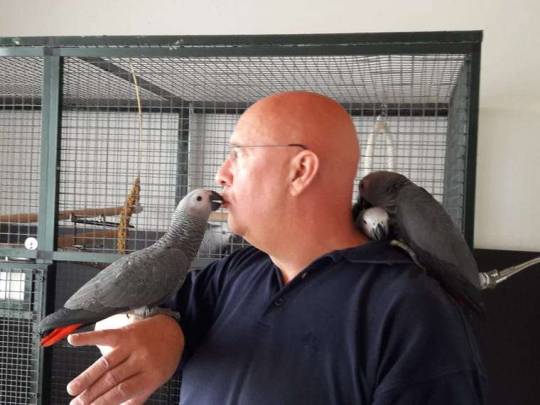
Commitment to Quality
Our extensive experience spanning more than a decade underscores our dedication to breeding high-quality African grey parrots. We stand behind the health of our parrots with a 1-year congenital Health Guarantee, a testament to our commitment to their well-being.
Adhering to strict breeding standards, we focus on producing parrots with exceptional health, temperament, and overall quality. Our dedication to creating confident and socialized parrots ensures that they seamlessly integrate into your family as cherished members.
Our Approach to Breeding
At African Grey Parrot Farm, our approach to breeding emphasizes the natural development and socialization of our parrots. We start our parrot babies under the nurturing care of their parents, allowing them to grow in a supportive environment. In our intensive care nursery, each African grey baby receives individualized attention and affection, fostering a strong foundation of security and trust.
With a focus on love and gentle handling, we ensure our parrots develop into emotionally healthy companions. Transitioning to pet homes, our parrots become integral parts of families, reflecting our commitment to finding them loving and caring environments.
1 note
·
View note
Text
Multiple origins and genomic basis of complex traits in sighthounds
Published 11th July 2023
A study performing genome sequencing for 123 sighthounds individuals and breeds ,as well as grey wolves and modern dogs, to pinpoint the origin and genes influencing the morphology of the sighthound genome.

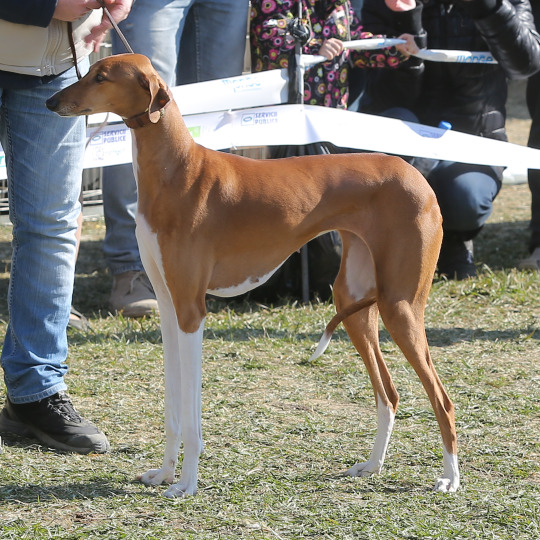

Image of middle eastern sight hound, African sight hound and European sight hound, from:

geographic and genetic coupling of samples

gene flow between sight hounds and ancient wolves
Population genomic analysis suggested that sighthounds originated from native dogs independently and were mixed among different breeds, supporting the multiple origins hypothesis of sighthounds.
"Results showed dramatic admixture of ancient wolves in African sighthounds, even more than with modern wolves. Whole genome-scan analysis identified 17 positively selected genes (PSGs) in the African population, 27 PSGs in the European population, and 54 PSGs in the Middle Eastern population. None of the PSGs overlapped in the three populations. Pooled PSGs of the three populations were significantly enriched in GO:0051279, which is related to blood circulation and heart contraction. ESR1, JAK2, ADRB1, PRKCE, and CAMK2D were under positive selection in all three selected groups. This suggests that different positively selected genes in the same pathway contributed to the similar phenotype of sighthounds. An ESR1 mutation (chr1: g.42,177,149 T>C) in the transcription factor binding site of Stat5a, and a JAK2 mutation (chr1: g.93,277,007 T>A) in the transcription factor binding site of Sox5. Functional experiments confirmed that the ESR1 and JAK2 mutation reduced their expression."
Source:
1 note
·
View note
Text
How it started:

How it's going:

A successful day overall
9 notes
·
View notes
Text
oh
oh raven with a therapy pet
animal's emotions are easier for her to deal with as theyre usually more simple and survival based
and having a pet or even just interacting with animals is very calming and soothing, it would help her regulate her emotions and aid in her meditations
not sure what kind of pet she would have but... my top 3 choices are cat, bunny, or bird
#raven#teen titans#dc comics#dcu#she rescues an african grey parrot from an illegal exotic pet trade ring they take down#they live a very long time and need a lot lot lot of interaction and enrichment but. she could handle that#if she gets confused as to what the bird needs she just asks gar to talk to them (or just for advice in general)#just like 'ok so your bird told me hes been anxious lately bc he would prefer this other kind of diet but make sure not to over-treat them"#gar would be a very good animal care consultant... he does that on the side. goes to animal sanctuaries or people's homes and helps
12 notes
·
View notes
Text
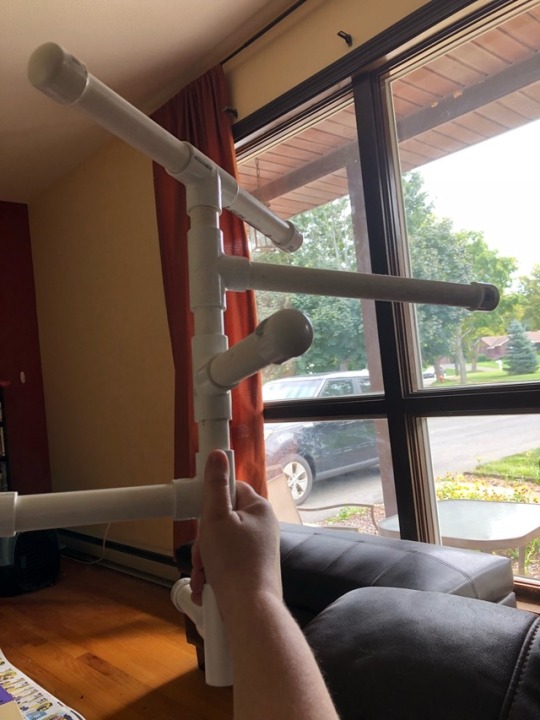
Starting a build on a new tabletop play stand for Paulie. A trip to Lowe’s is in my future because I don’t have enough T-joints to finish my plans. Also, the PVC Snips have vanished into the ether and traditionally, the only way to make a lost item appear - it to buy the replacement.
#cag#congo african grey#parrot life#paulie#parrot#parrot playstand#building for birds#parrot enrichment#parrot toys
4 notes
·
View notes
Note
My have had an African Grey for my whole life, and when I move out, I was thinking about getting a pigeon at some point. Would my knowledge of the parrot help with pigeons at all? Is there things that are good with parrots that I have to be wary about with pigeons or vice versa?
Unfortunately, no.
People coming from a parrot background have to unlearn literally everything for pigeon care.
Pigeons are strict granivores, first of all.
They cannot digest anything except seeds.
That's a full 180 from parrots only getting seeds as a very rare treat.
You will severely malnourish a pigeon by trying to feed it like a parrot, please do not!
Pigeons are cliff nesters that need flat perches. Round ones hurt their feet, which is why you don't often see them in trees.
They can't chew, so you don't have to worry about paint on wood or heavy metal poisoning from cage bars like you would with a parrot.
You really don't have to worry about much in the way of property damage.
Pigeons can't climb. They fly and walk, and a pigeon who can fly will consider a ramp to be cluttering up their flight space.
They need more floor space than height. All of their foraging is done on the ground, so that's where they should be fed. And they should have space to do some wandering and poking around.
Hanging toys make an enclosure feel terrifyingly cluttered to a pigeon. They don't like anything to touch their wings in flight, so if something is hanging in their flight space, they just won't attempt to fly.
So an enclosure for a pigeon looks miserably spartan coming from a parrot background.
It's honestly best not to put toys in the sleep cage at all.
Pigeons are cage aggressive by nature, because the life or death need to defend what feels to them like a nest space is hard wired in.
They are extremely social, but only away from their nest.
So instead of having them step up in the cage as I see many parrot owners do, it's best to invite the pigeon out by opening the enclosure door in a safe space.
They do play with toys! Just not the ones parrots like.
Pigeons can recognize themselves in mirrors. A pigeon who has never seen a mirror before figures out very quickly that that is not another bird.
So that's a much more safe enrichment for them than it is for a parrot.
They like baths in shallow pans or casserole dishes
Forage trays can be made using the same thing as a bath, but putting sand, straw, hay, pine needles, or a mix of those in and scattering high value seeds like safflower for them to find.
Pigeons like shiny things and a number of auditory stims.
Their favorite environmental noises are jingling, chimes, and crinkly sounds.
Crinkle mats for kitties are fun to stomp and dance on.
Small wind chimes are fun to peck and make a fun noise.
Jingle bells are shiny and make a fun noise. I like to make bread tie handles for them so the pigeons can more easily puck them up and shake them.
Pigeons like to play house, and blunted tooth picks or q-tips with the tips snipped off are basically pigeon Lego.
Cocks with bring them to you to arrange.
Hens are happy to accept them from you.
Which brings me to laying.
Parrots are opportunistic nesters that pretty much lay when all the conditions are just right.
To my knowledge, they are not harmed by those conditions just not being met.
The only condition for a pigeon to lay is literally to not be physically starving or severely stressed.
They absolutely NEED to be allowed sit full term in order to prevent egg binding!!!
It doesn't have to be their real egg.
They take wooden, plastic, and clay fakes easily.
But if you just take it away without swapping or her nest is not comfortable or doesn't feel safe, she will immediately start a new clutch.
An egg takes 5 days from the hormonal trigger to complete development and be laid.
That is not enough time to recover what she has lost in their production.
Make sure adult hens have sufficient calcium and a safe comfortable nest, and let her sit the full 18 days on a fake.
If she doesn't live with a cock, you can let her set the real egg.
Pigeon flocks are democratic meritocracies that vote on everything they do as a group and compromise when they disagree.
Their response to a leader that ignores their say and makes no attempt to compromise is to refuse to cooperate with that flock mate.
Pigeons see human households as a mixed species flock.
Physical contact does not sexually frustrate pigeons like it does parrots.
Single birds that ask their care taker to cuddle with them will suffer emotional distress if their human refuses.
This is a really broad question, and there may be some things I missed.
Here is the master post for first time pigeon keepers:
https://theramseyloft.tumblr.com/post/667402203113422848/would-it-be-possible-to-arrange-your-pigeon-care
I go into a LOT more detail here.
558 notes
·
View notes